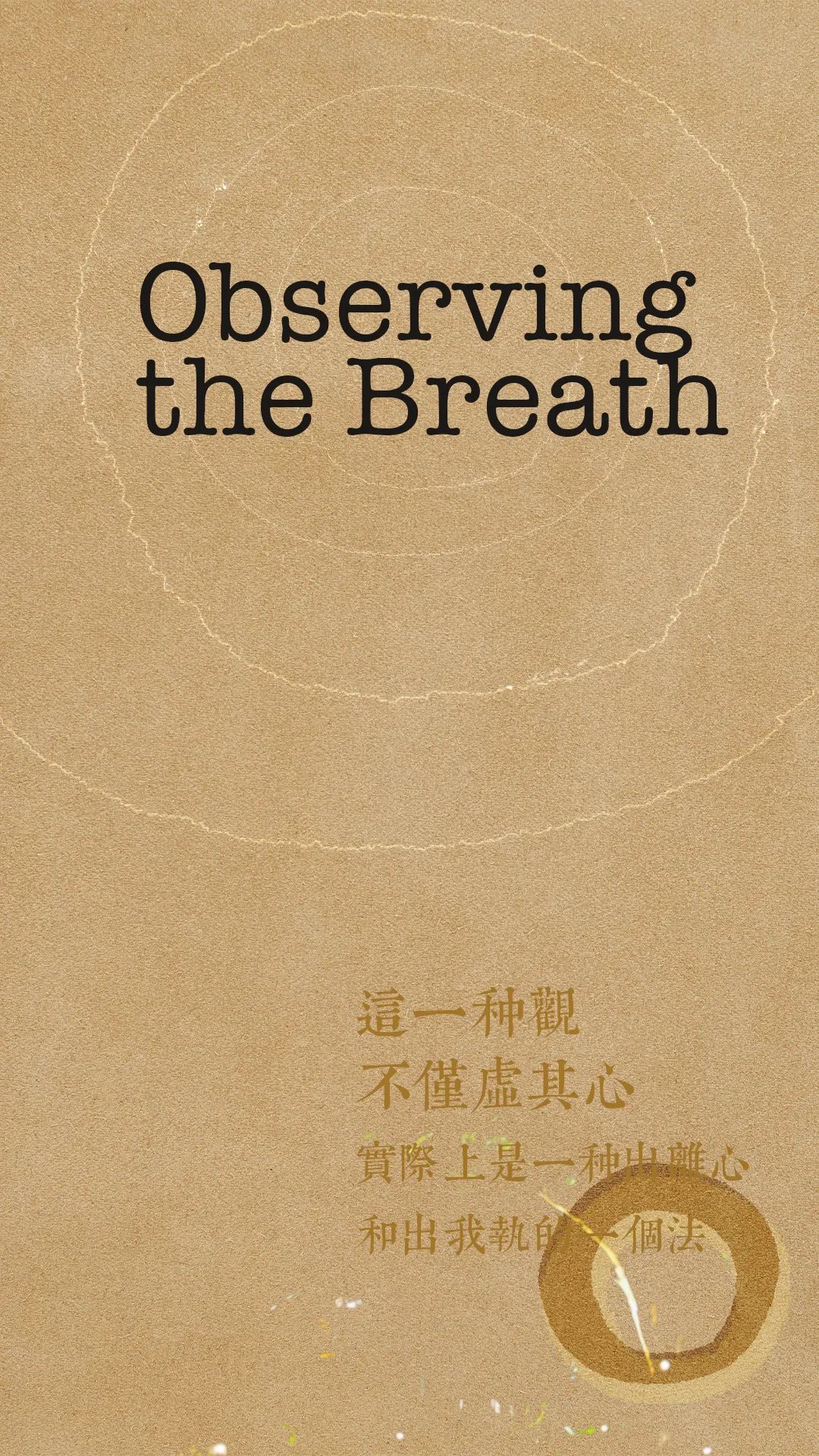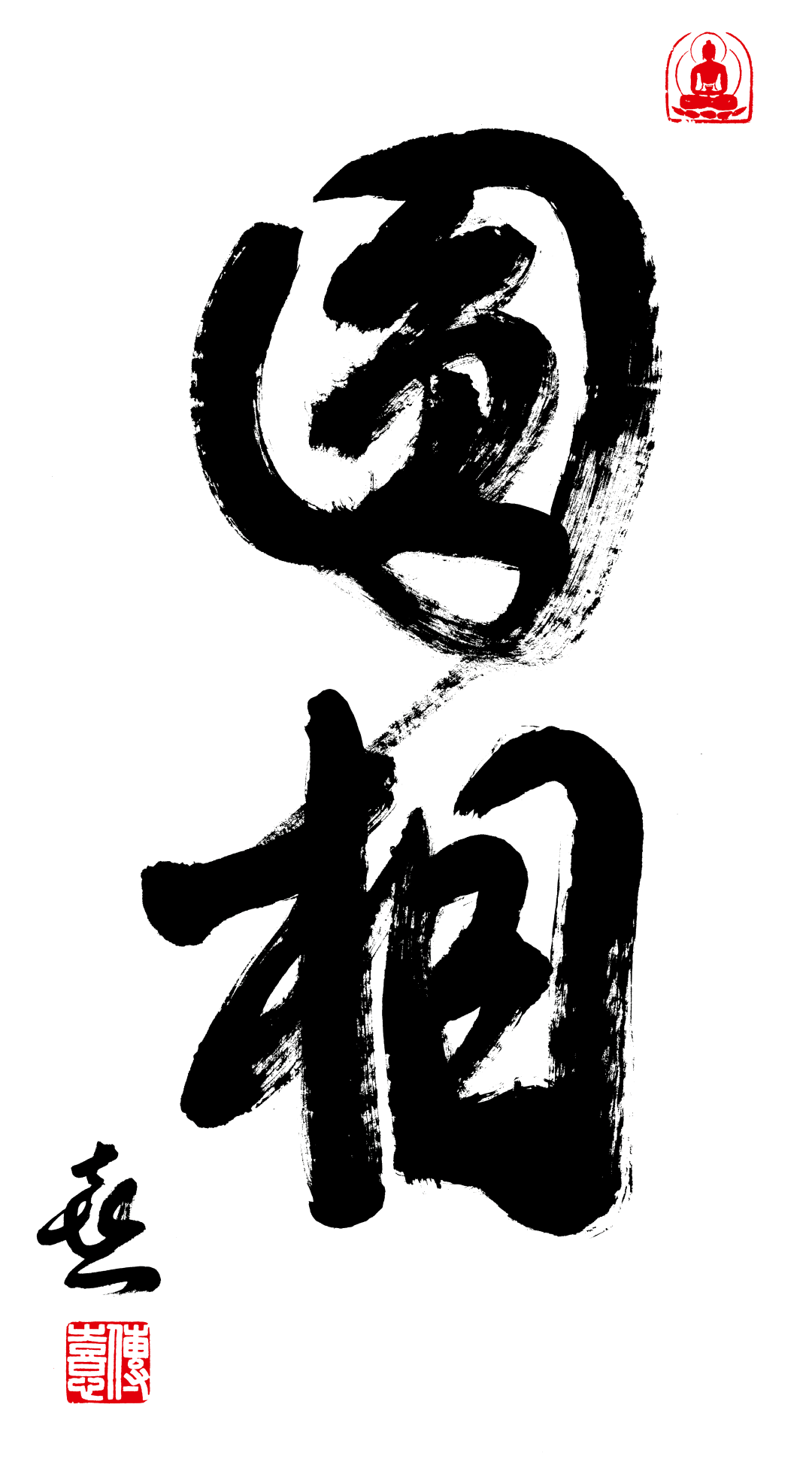出离心和出我执的重要修法

NAMO BUDDHA
NAMO DHARMA
NAMO SANGHA
Observing the Breath: A Practice of Renunciation and Liberation from Ego
please click to play audio
Observing the Breath: A Practice of Renunciation and Liberation from Ego
The practice of observing the breath is a method for cultivating a mind that renounces and releases attachment to both the external world and the notion of a self.
In Master Zhizhe’s treatise, The Six Subtle Gates (六妙门), the practice of observing the breath (观出入息法) is thoroughly explained with step-by-step guidance. In the beginning, one actively observes the breath, but with time, it becomes less about observing and more about following the natural flow of the breath (随息). The initial stage of observation involves attachment to a sense of a solid "self”, which is necessary at the beginning to help to calm the mind and focus it on a single point (制心一处).
In Buddhism, there is a saying: "When the mind is stilled and focused, nothing is left undone." As the mind becomes calm, the power of mindful awareness grows stronger, clearer, and more penetrating. The deeper the calm, the more profound the insight becomes. Through the breath, through the movement of the wind element, this mindfulness spreads throughout the body, touching all aspects of the elements: earth, water, fire, and wind. Starting with this wind element, our awareness extends to contemplate the body’s material form, sensation, perception, volition, and consciousness. From this single starting point, the breath, our awareness gradually illuminates all things.
My teacher also emphasised the practice of counting breaths. For some practitioners, a cycle of counting breaths from one to ten is sufficient; others teach methods of simply counting "one, two.” These practices all help to settle and focus the mind on one point. In the Tiantai tradition, this is referred to as the practice of "counting breaths to subdue the distracted mind."
This form of mindfulness is not only about emptying the mind; it is, in truth, a method for cultivating renunciation and releasing the ego, attachment to self. It is not merely about discarding the concepts of long or short, high or low, great or small — it is about letting go of the very notion of “self.”
Thus, within the breath, in the moonlight, the sense of self gradually dissolves. As this coarse attachment to self melts away, the observation of the breath becomes more than just watching the wind come and go and it ceases to be merely breath; it transforms into the flow of qi energy and vital forces within the body.
英文翻译:Iko, Matt(澳大利亚);
英文朗诵:Matt(澳大利亚);

观出入息法在智者大师的《六妙门》里面有一步一步的教导。观呼吸,观到后来就不是观息了,就变成随息。因为观,会有实有的执着,但一开始是需要的,需要我们靠观出入息把我们安定下来,制心一处。
我们佛教有句话叫“制心一处,无事不办”。当心安下来的时候,我们觉照就会越来越有力,越来越明朗,透彻。越止,这个慧观越透彻。我们由鼻子的呼吸,由一个风大,牵一发动全身,地水火风,风大、水大、地大、火大、甚至能再扩展到色法、受法、想法、行法、识法。由一个风大为起点让我们的觉照去照见它。
我师父也强调过数息。有的十数为一组,数到十再从头数,但也为数不多的教导说数“一、二”,这些都是帮助我们制心一处的。所以天台宗对治法里就讲到“散乱众生数息观”。
这一种观,不仅虚其心,实际上是一种出离心和出我执的一个法,不仅仅说把长、短、高、下、大、小的概念抛去了,甚至也把所谓的“我”的概念抛掉了。
The Six Subtle Gates
这是一种观,
不仅不仅虚其心,实际上是一种出离心和出我执的一个法。

所以就在呼吸里,在月光中,这个“我”慢慢的消融。粗大的我执消融的过程中,出入息不仅仅是一种息,到后来就变成了一种我们身体内在的气血的运转。

Die Betrachtung des Ein- und Ausatmens ist eine
Praxis der Entsagung und Loslösung
点击播放音频
Die Methode des Betrachtens der Einatmung und Ausatmung wird in Meister Zhizhe's "Sechs Tore zur Weisheit" Schritt für Schritt gelehrt. Beim Betrachten des Atmens, wenn man tiefer eindringt, verwandelt es sich nicht mehr in ein bloßes Betrachten der Atemzüge, sondern in ein Mitgehen mit dem Atem. Denn die Beobachtung führt zu einer Anhaftung an etwas Realen, aber am Anfang ist dies notwendig, damit wir uns durch das Betrachten der Einatmung und Ausatmung beruhigen und unsere Aufmerksamkeit auf einen einzigen Punkt konzentrieren können.
Wir Buddhisten haben einen Spruch, der “Wenn man seinen Geist an einem Ort festhält, ist nichts unmöglich ”lautet. Wenn unser Geist zur Ruhe kommt, wird unsere Bewusstheit zunehmend stärker, klarer und durchdringender. Je mehr wir innehalten, desto durchdringender wird diese Weisheit. Wir beginnen mit dem Atem durch die Nase, mit einem Wind-Element, das durch seine Bewegung den gesamten Körper aktiviert. Aus Wind-, Wasser-, Erde- und Feuer-Elementen können wir sogar weiter ausweiten zu Formen, Empfindungen, Vorstellungen, Handlungen und Erkenntnissen. Wir beginnen mit dem Wind-Element als Ausgangspunkt, um unsere Bewusstheit darauf zu richten.
Mein Meister betonte ebenfalls die Praxis des Zählens der Atemzüge. Einige empfehlen, in Gruppen von zehn zu zählen, und nach zehn wieder von vorne zu beginnen, während nur wenige die Anleitung geben, einfach „Eins, Zwei“ zu zählen. Diese Methoden dienen alle dazu, unseren Geist auf ein einziges Objekt zu konzentrieren. Daher erwähnt die Tiantai-Schule in ihren Methoden der Korrektur von „der Atemzählungsmeditation für abgelenkte Wesen“.
Diese Sichtweise leert nicht nur den Geist, sondern ist tatsächlich eine Form der Entsagung und des Aufgebens des eigenen Egos. Sie wirft nicht nur die Konzepte von lang, kurz, hoch, niedrig, groß und klein ab, sondern auch das sogenannte Konzept des eigenen Ich.
Also, im Atem, im Mondlicht, löst sich dieser Ich allmählich auf. Im Prozess der Auflösung des groben Ich-Behauptens wird der Ein- und Ausatmung nicht nur ein Atem, sondern später zur Bewegung der Lebenskraft innerhalb unseres Körpers.
德语翻译:江峡(德国)
德语朗诵:Markus Zhou-Schneider(德国)
-END-

